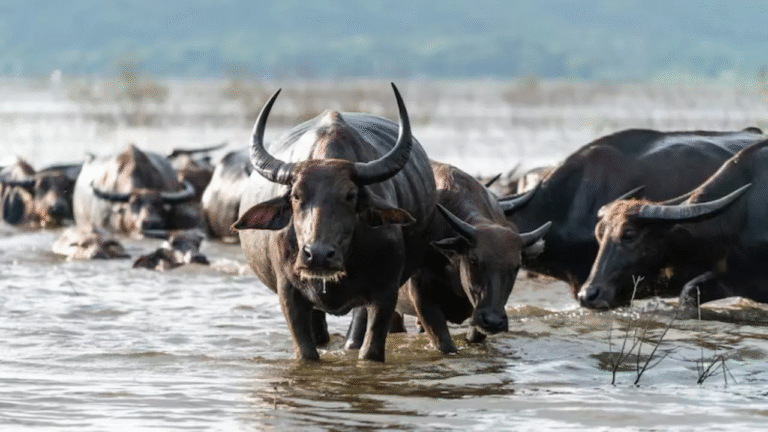
Pistachio farming is growing to become a large-scale profitable play in India’s horticulture space. Although the crop has mainly been a feature in the produce of countries like Iran, the U.S., and Turkey, which are leaders in this space, it is now being seen that the climate in the north of India, which includes Jammu Kashmir, Himachal Pradesh, and Rajasthan, is very much suitable for pistachio growth. By 2025, we will see an increase in the demand for health-conscious snacking and dried fruits, which in turn has made pistachio farming a very attractive agricultural play.
Understanding Pistachio Cultivation
Pistachio (Pistacia vera) is a member of the Anacardiaceae family, which also includes cashew and mango. The pistachio tree is a small deciduous shrub that does very well in dry arid climates, which have long hot summers and cold winters. It requires full sun for the best nut production. A mature pistachio tree may live for over 100 years, which makes it a great long-term income source once the tree is established.

Suitable Climate and Soil Conditions
Pistachio plants do well in certain conditions:
Climate: Pistachios do best in a temperature range of 10°C to 40°C. Also, they require 800 to 1000 hours of winter temperatures below 7°C for proper bud development.
Rainfall: Annual rainfall should be less than 50 cm; also, it may lead to disease and root rot in some cases.
Soil: Well, in a soil that is well drained and of a sandy loam texture, which has a pH between 7 and 8, pistachios do best. Also, pistachios will tolerate slightly saline soil, but they do not do well in heavy clay or waterlogged conditions.
Altitude: At elevations between 500 and 1200 meters, pest-free growth is achieved.
Propagation and Planting
Pistachio propagation is mainly by grafting, which is the process of combining a rootstock with a scion of the desired variety. In India, what is used as rootstocks are Pistacia khinjuk and Pistacia integerrima. Also, these are very hardy and resistant to soil-borne diseases.
Spacing: Plants should be put 20 to 24 feet apart for best results, which includes full sunlight and canopy development.
Pollination: Pistachios are of a dioecious type, which means that male and female flowers grow on separate plants. For effective pollination, every 8 to 10 female plants should have 1 male.
Planting Time: Between January and February, which is at the start of the growing season, is the best time for planting pistachios in India.
Irrigation and Fertilization Needs
Although pistachios are drought-tolerant, what we have found is that during the fruit development stage, regular irrigation does indeed increase yield and quality of the nuts. Drip irrigation systems are the way to go for consistent soil moisture, which, at the same time, does not cause waterlogging.
Fertilizer management: Fertilizer management:
At the time of initial planting, apply 20 30 kg per tree.
Use a balanced mix of nitrogen (N), phosphorus (P), and potassium (K). Also based on soil test results.
Micronutrients, which include zinc and boron, improve nut size and total productivity.
Pest and Disease Management
Common pests that we see are aphids, thrips, and leafhoppers. We may use neem oil and natural predators for control of these pests, which in turn also helps us to avoid chemical use. As for fungal issues like root rot and verticillium wilt, which are present in poorly drained soils, it is important to put in place preventive soil practices and also to see to it that we have proper irrigation.

Harvesting and Yield
Pistachio trees will bear first fruit at the age of 6 7 years from transplanting out and will reach full commercial bearing at around the 10th year. At maturity, trees can produce between 8 and 15 kg of dry nuts per year, depending on which management practices are used and what the weather is like. Harvest is in the late August to October time frame when the shell begins to split open.
Setup Cost and Profitability:
Pistachio production has a low initial outlay but, in the long term, is very profitable.
Land Preparation and Planting: Rs 60,000 Rs 80,000 per acre.
Irrigation Installation (Drip System): Between 30,000 and 50,000 per acre.
Saplings (100–120 plants per acre): Rs 400 Rs 600 per plant.
Fertilizers and Maintenance (Yearly): Rs 10,000 to Rs 20,000.
Total Initial Setup: ₹1.2 1.5 lakh per acre.
Once we see fruit production take off, the profit margins may actually improve greatly. In the 10th year of an established pistachio orchard, which is at full maturity, we may see production of 800 to 1000 kgs of nuts out of an acre of land. If at the 2025 market rate of ₹1,200 to ₹1,800 per kg, which I am using as an example, that may result in annual revenues between 10 and 15 lacs per acre, with net profits of about 8 to 10 lacs, after which we have our expenses.
Challenges and Future Outlook
The issue in pistachio farming is that it has a large gestation period and issues with climate change, which in turn sees many farmers without the technical know-how and grafted material. But with the support of academic and government institutions that push dry land farming, we may see India become self-sufficient in pistachio production in the coming years.





